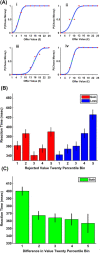The role of human orbitofrontal cortex in value comparison for incommensurable objects
- PMID: 19571129
- PMCID: PMC2712081
- DOI: 10.1523/JNEUROSCI.0717-09.2009
The role of human orbitofrontal cortex in value comparison for incommensurable objects
Abstract
The human orbitofrontal cortex is strongly implicated in appetitive valuation. Whether its role extends to support comparative valuation necessary to explain probabilistic choice patterns for incommensurable goods is unknown. Using a binary choice paradigm, we derived the subjective values of different bundles of goods, under conditions of both gain and loss. We demonstrate that orbitofrontal activation reflects the difference in subjective value between available options, an effect evident across valuation for both gains and losses. In contrast, activation in dorsal striatum and supplementary motor areas reflects subjects' choice probabilities. These findings indicate that orbitofrontal cortex plays a pivotal role in valuation for incommensurable goods, a critical component process in human decision making.
Figures




References
-
- Alexander GE, Crutcher MD, DeLong MR. Basal ganglia-thalamocortical circuits: parallel substrates for motor, oculomotor, “prefrontal” and “limbic” functions. Prog Brain Res. 1990;85:119–146. - PubMed
-
- Averbeck BB, Latham PE, Pouget A. Neural correlations, population coding and computation. Nat Rev Neurosci. 2006;7:358–366. - PubMed
-
- Blavatsky PR. Stochastic utility theorem. J Math Econ. 2008;44:1049–1056.
-
- Botvinick MM, Cohen JD, Carter CS. Conflict monitoring and anterior cingulate cortex: an update. Trends Cogn Sci. 2004;8:539–546. - PubMed
-
- Camerer C, Ho TH. Experience-weighted attraction learning in normal form games. Econometrica. 1999;67:827–874.
Publication types
MeSH terms
Substances
Grants and funding
LinkOut - more resources
Full Text Sources
